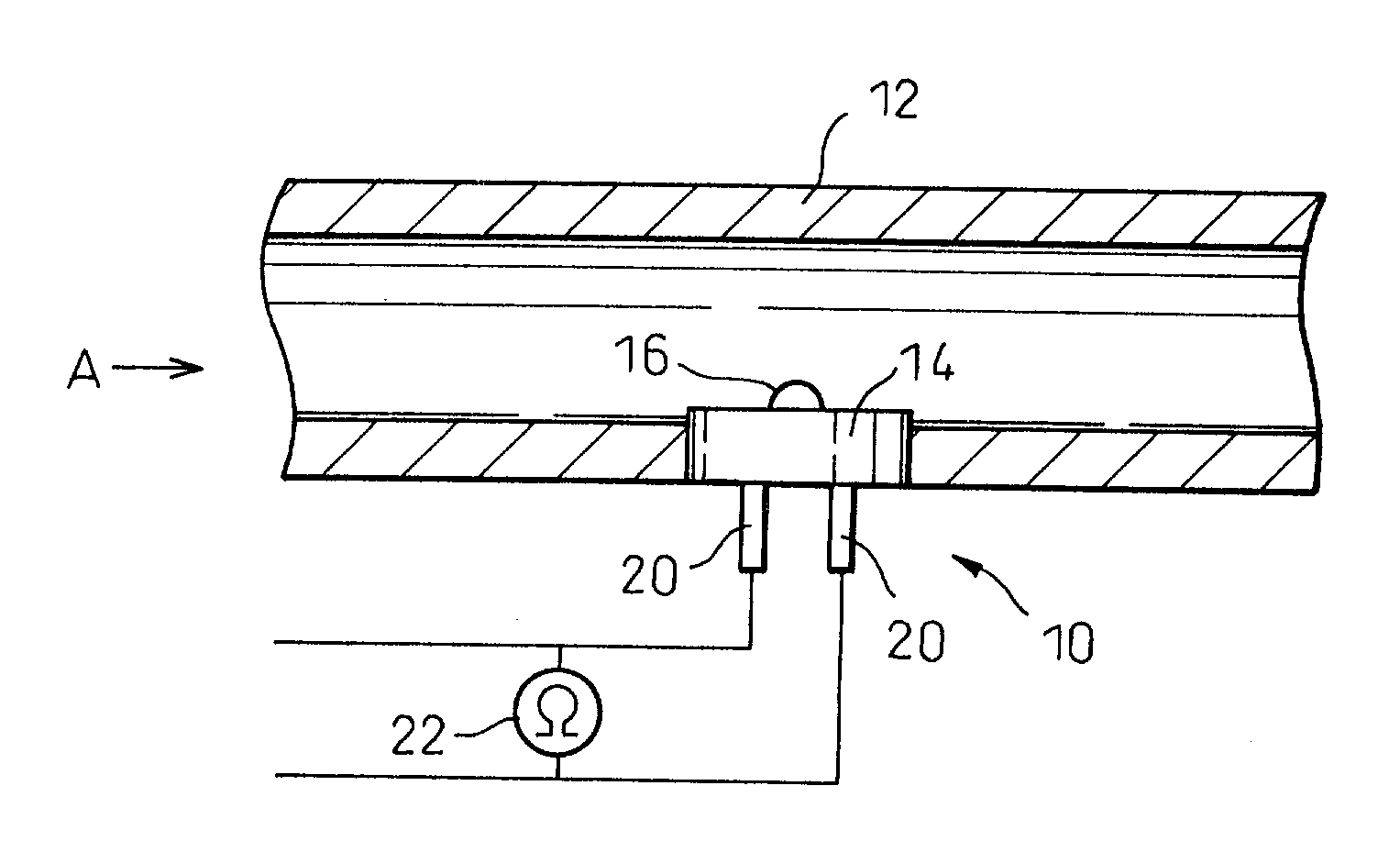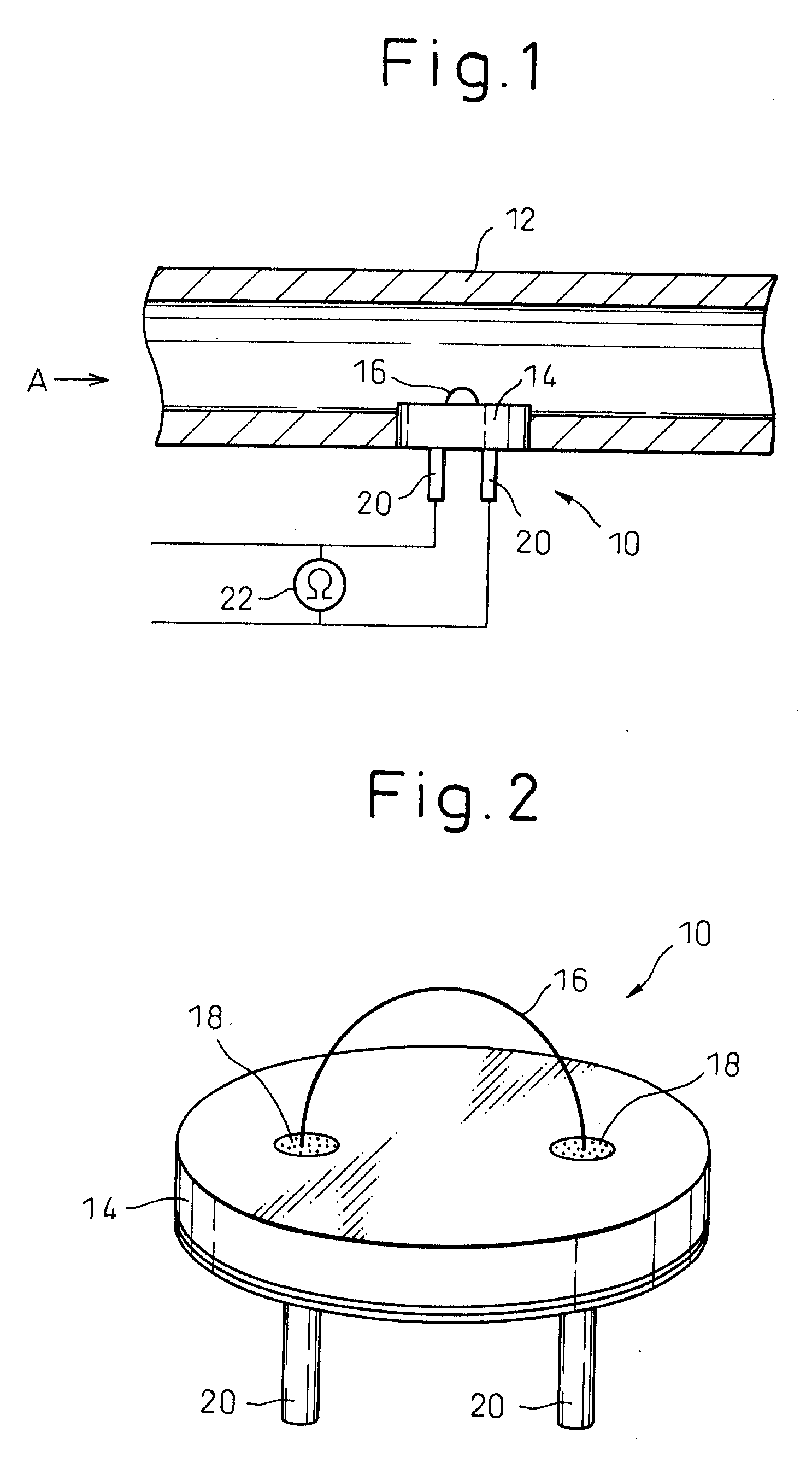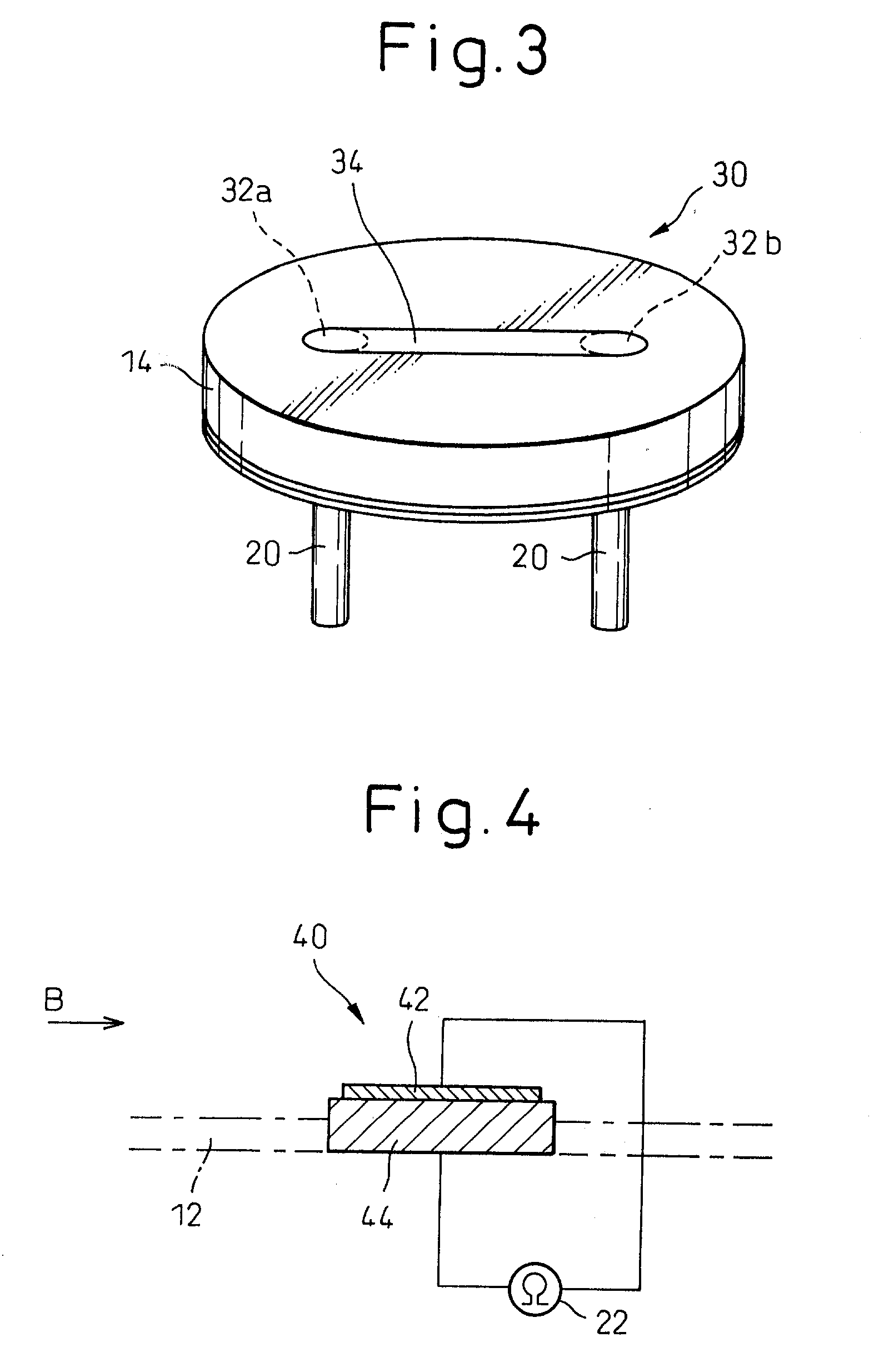Sulfur component sensor and sulfur component detector
a technology of sensor and component, applied in the direction of material analysis, instruments, biological materials, etc., can solve the problems of reducing the functions of the reformer and the shifter, further reducing the power generation capacity of the fuel cell, and the device is large, so as to increase the electrical resistance value and increase the electrical
- Summary
- Abstract
- Description
- Claims
- Application Information
AI Technical Summary
Benefits of technology
Problems solved by technology
Method used
Image
Examples
example 1
[0050] Example 1
[0051] A strip-like pattern was formed on a circular ceramic substrate by rectangularly applying thereto a copper paste, and firing it. The electrical resistance value of the strip-like pattern measured 0.1 ohm. Subsequently, the ceramic substrate on which the strip-like pattern was formed was left to stand in a nitrogen gas stream containing 50 ppm of hydrogen sulfide at a flow rate of 500 milliliters per minute for 48 hours, while maintained at a temperature of 600.degree.C. When the ceramic substrate was removed form the stream, and the strip-like pattern was observed with naked eyes, it had been discolored and was thinner. The electrical resistance value of the discolored and thinned strip-like pattern could not be measured.
example 2
[0052] Example 2
[0053] A strip-like pattern was formed on a circular ceramic substrate by rectangularly applying thereto a tungsten paste, firing it, and then electroplating the rectangular pattern with nickel. The electrical resistance value of the strip-like pattern measured 0.5 to 0.6 ohm. Subsequently, the ceramic substrate on which the strip-like pattern was formed was left to stand in a nitrogen gas stream containing 50 ppm of hydrogen sulfide at a flow rate of 500 milliliters per minute for 48 hours, while maintained at a temperature of 600.degree.C. When the ceramic substrate was removed form the stream, and the strip-like pattern was observed with naked eyes, it had been discolored. The discolored strip-like pattern had an electrical resistance value of 5 to 6 ohms, which was larger than the electrical resistance value at the formation of the strip-like pattern.
example 3
[0054] Example 3
[0055] A platinum wire having a diameter of 0.4 millimeter was spot-welded to either end of a copper wire having a diameter of 0.4 millimeter and a length of about 5 millimeters, and the portion of platinum wire was inserted into a sheath made of zirconia ceramic. The resistance between the ends of the copper wire measured 1.76 ohms in a nitrogen gas stream at 600.degree.C. The portion of the copper wire was exposed to a nitrogen gas stream containing 50 ppm of hydrogen sulfide at a flow rate of 500 millimeter per minute at 600.degree.C and, as a consequence, the resistance increased to the order of 10.sup.6 ohms after a lapse of 6 hours, as shown in Fig. 7.
PUM
| Property | Measurement | Unit |
|---|---|---|
| electrical resistance | aaaaa | aaaaa |
| temperature | aaaaa | aaaaa |
| electrical resistance | aaaaa | aaaaa |
Abstract
Description
Claims
Application Information
 Login to View More
Login to View More - R&D
- Intellectual Property
- Life Sciences
- Materials
- Tech Scout
- Unparalleled Data Quality
- Higher Quality Content
- 60% Fewer Hallucinations
Browse by: Latest US Patents, China's latest patents, Technical Efficacy Thesaurus, Application Domain, Technology Topic, Popular Technical Reports.
© 2025 PatSnap. All rights reserved.Legal|Privacy policy|Modern Slavery Act Transparency Statement|Sitemap|About US| Contact US: help@patsnap.com



